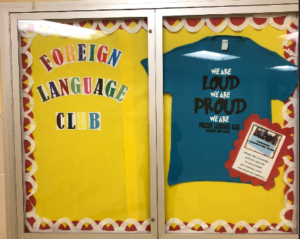Educational Gains among Immigrants Still Show Areas in Need of Improvement
by Aaron Leo, Postdoctoral Fellow (Edited by Kristen C. Wilcox, Director NYKids)
A recent Pew Research Center report indicates that many immigrant groups in the United States are making gains in educational attainment. Not only is the proportion of immigrants with a Bachelor’s degree or higher nearly equal to the native-born population, but based on analyses from the National Bureau of Economic Research, most immigrant groups surpass native-born Americans’ average levels of educational attainment by the second generation.
However, some significant disparities in educational attainment remain; many Hispanic/Latino groups, including Mexican immigrants who comprise the largest segment of the country’s immigrant population continue to lag behind both their immigrant peers and native-born Americans. Indeed, according to an Education Trust Report only 22.6% of Latinos in the U.S. hold a Bachelor’s degree or higher, while the number of Whites with the same level of attainment exceeds 47%.
Despite these disparities, some gains have been made by Hispanic/Latinos and their descendants. Those from South America exceed the average educational attainment of native-born Americans by the second generation. And while first-generation Mexicans and Puerto Ricans have drastically lower rates of attainment than the average native-born American residing in the continental U.S., they nearly close the gap by the second generation.
In New York State, over a quarter of the Latino population has a college degree; a 9% jump since 2000. Yet, as a Hechinger Report indicates, the college degree gap between Latinos and Whites hovers around a significant 29%.
These findings clearly show that much work is to be done to ensure that the educational attainment among Hispanic/Latino youth, whose families generally arrive with lower levels of education than their counterparts from Africa and Asia, does not continue to lag behind other ethno-racial groups. Because education is intimately tied to wage earning potential and social mobility, it is crucial that educators address barriers for Hispanic/Latino students’ preparation for college and career.

NYKids’ most recent college and career readiness study provides examples of just how some educators are tackling this challenge and seeing above-predicted advanced graduation rates (a proxy for college and career readiness) among Hispanic/Latino students. As is described in more detail in the Freeport and Port Chester case studies, educators support Hispanic/Latino youth by:
1. Valuing bi- and multilingualism in their programming and staffing and emphasizing culturally-responsive approaches as they revise curricula and adapt instructional practices.
2. Fostering high expectations of Hispanic/Latino youth with encouragement to engage in rigorous Advanced Placement (AP) coursework and programs like the International Baccalaureate (IB).
3. Reaching out to community service organizations and family members to help them help children succeed.
